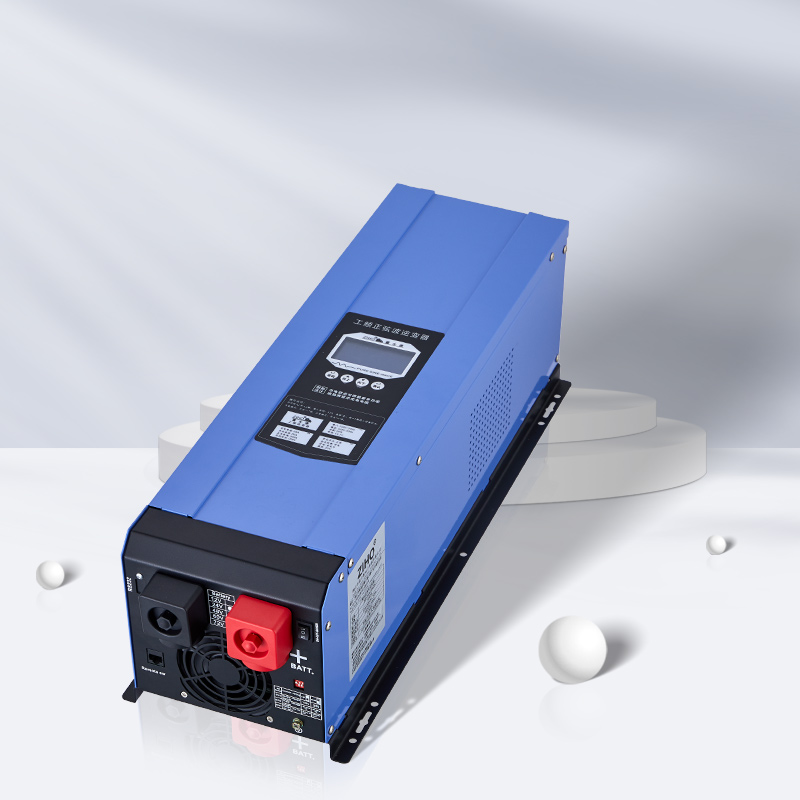- English
- Español
- Português
- русский
- Français
- 日本語
- Deutsch
- tiếng Việt
- Italiano
- Nederlands
- ภาษาไทย
- Polski
- 한국어
- Svenska
- magyar
- Malay
- বাংলা ভাষার
- Dansk
- Suomi
- हिन्दी
- Pilipino
- Türkçe
- Gaeilge
- العربية
- Indonesia
- Norsk
- تمل
- český
- ελληνικά
- український
- Javanese
- فارسی
- தமிழ்
- తెలుగు
- नेपाली
- Burmese
- български
- ລາວ
- Latine
- Қазақша
- Euskal
- Azərbaycan
- Slovenský jazyk
- Македонски
- Lietuvos
- Eesti Keel
- Română
- Slovenski
What is the working principle of the inverter?
2024-12-20
Friends, the principle of the inverter is to first convert AC into DC. Then use electronic components to switch the DC into AC. Generally, the inverter with higher power uses thyristor. And set an adjustable frequency device to make the frequency adjustable within a certain range. It is used to control the number of revolutions of the motor. The number of revolutions can be adjusted within a certain range. The inverter is widely used in the speed regulation of AC motors. Variable frequency speed regulation technology is an important development direction of modern power transmission technology. With the development of power electronics technology, AC frequency conversion technology has gradually matured from theory to practice. The inverter not only has smooth speed regulation, large range, high efficiency, small starting current, stable operation, but also obvious energy saving effect. Therefore, AC variable frequency speed regulation has gradually replaced the traditional slip speed regulation, variable pole speed regulation, DC speed regulation and other speed regulation systems in the past, and is more and more widely used in metallurgy, textile, printing and dyeing, smoke machine production line and buildings, water supply and other fields. It is generally divided into several parts such as rectifier circuit, smoothing circuit, control circuit, inverter circuit, etc.

1. Rectification circuit
The function of the rectifier circuit is to convert AC power into DC power. The rectifier circuit is generally a separate rectifier module.
2. Smoothing circuit
The smoothing circuit contains a pulsating voltage with a frequency of 6 times that of the power supply in the rectifier and the rectified DC voltage. In addition, the pulsating current generated by the inverter also causes the DC voltage to fluctuate. In order to suppress voltage fluctuations, inductors and capacitors are used to absorb pulsating voltage (current). Generally, the DC part of the general-purpose inverter power supply has a margin for the main circuit, so the inductor is omitted and a simple capacitor filtering and smoothing circuit is used.
3. Control circuit
Nowadays, the variable frequency speed regulator basically uses a 16-bit or 32-bit microcontroller or DSP as the control core, thereby realizing full digital control.
The inverter is a speed regulating device with adjustable output voltage and frequency. The circuit that provides the control signal is called the main control circuit. The control circuit is composed of the following circuits: the "operation circuit" of frequency and voltage, the "voltage and current detection circuit" of the main circuit, and the "speed detection circuit" of the motor. The control signal of the operation circuit is sent to the "drive circuit" and the "protection circuit" of the inverter and the motor. The control method adopted by the inverter is speed control, torque control, PID or other methods. 4 Inverter circuit The inverter circuit is opposite to the rectifier circuit. The inverter circuit converts the DC voltage into the AC voltage of the required frequency, and turns on and off the power switch devices of the upper bridge and the lower bridge at a determined time. Thus, a three-phase AC voltage with a phase difference of 120° electrical angle can be obtained on the output terminals U, V, and W.



